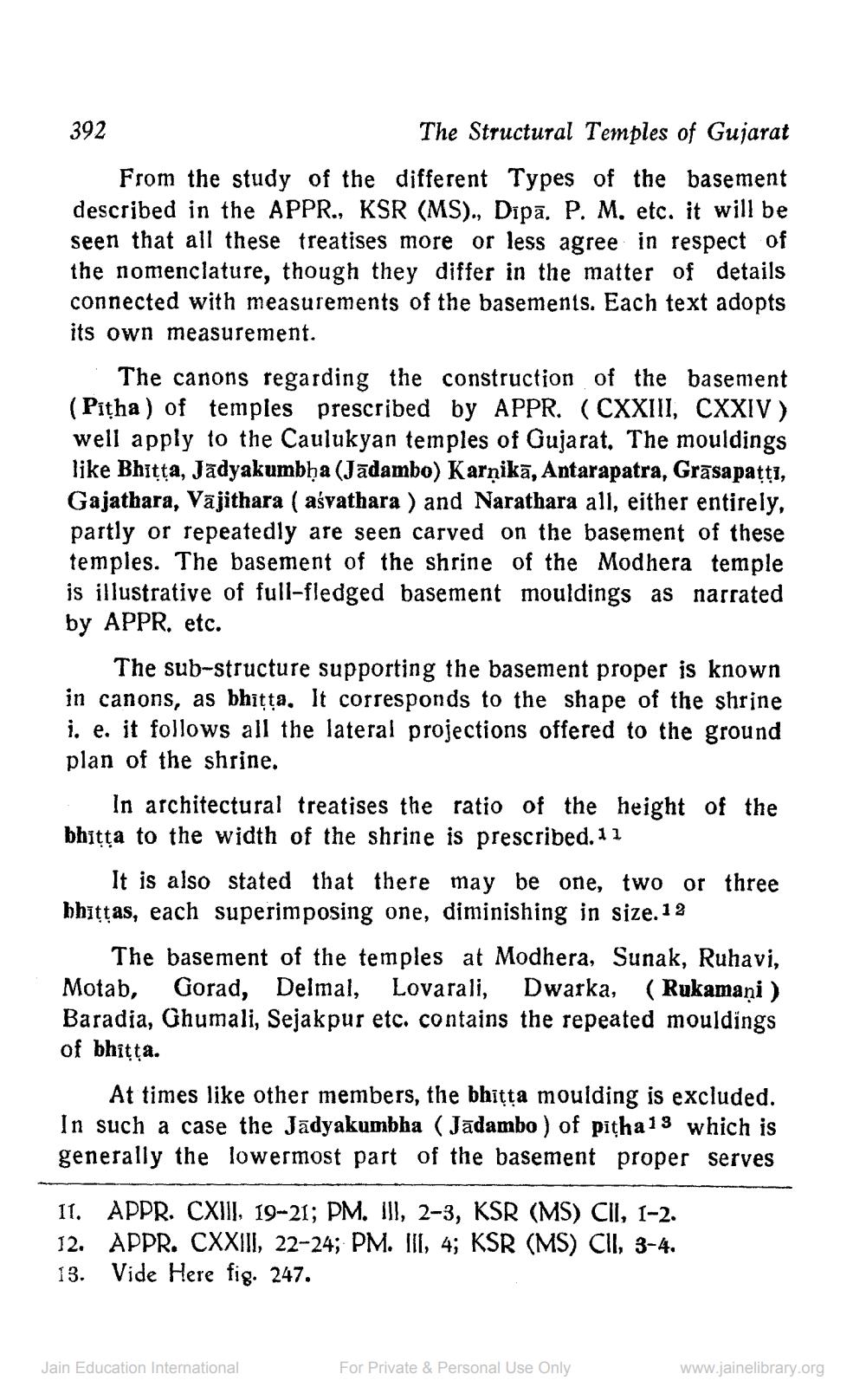________________
392
The Structural Temples of Gujarat From the study of the different Types of the basement described in the APPR., KSR (MS)., Dipā. P. M. etc. it will be seen that all these treatises more or less agree in respect of the nomenclature, though they differ in the matter of details connected with measurements of the basements. Each text adopts its own measurement.
The canons regarding the construction of the basement (Pitha ) of temples prescribed by APPR. (CXXIII, CXXIV) well apply to the Caulukyan temples of Gujarat. The mouldings like Bhitta, Jādyakumbha (Jādambo) Karņikā, Antarapatra, Grāsapattı, Gajathara, Vājithara ( aśvathara ) and Narathara all, either entirely, partly or repeatedly are seen carved on the basement of these temples. The basement of the shrine of the Modhera temple is illustrative of full-fledged basement mouldings as narrated by APPR. etc.
The sub-structure supporting the basement proper is known in canons, as bhīțța. It corresponds to the shape of the shrine i, e. it follows all the lateral projections offered to the ground plan of the shrine. - In architectural treatises the ratio of the height of the bhitta to the width of the shrine is prescribed. 11
It is also stated that there may be one, two or three bhītļas, each superimposing one, diminishing in size. 12
The basement of the temples at Modhera, Sunak, Ruhavi, Motab, Gorad, Delmal, Lovarali, Dwarka, (Rukamaņi) Baradia, Ghumali, Sejakpur etc. contains the repeated mouldings of bhitta.
At times like other members, the bhițța moulding is excluded. In such a case the Jādyakumbha (Jādambo ) of pitha 13 which is generally the lowermost part of the basement proper serves
11. APPR. CXII], 19-21; PM. III, 2-3, KSR (MS) CII, 1-2. 12. APPR. CXXIII, 22-24; PM. III, 4; KSR (MS) CII, 3-4. 13. Vide Here fig. 247.
Jain Education International
For Private & Personal Use Only
www.jainelibrary.org




